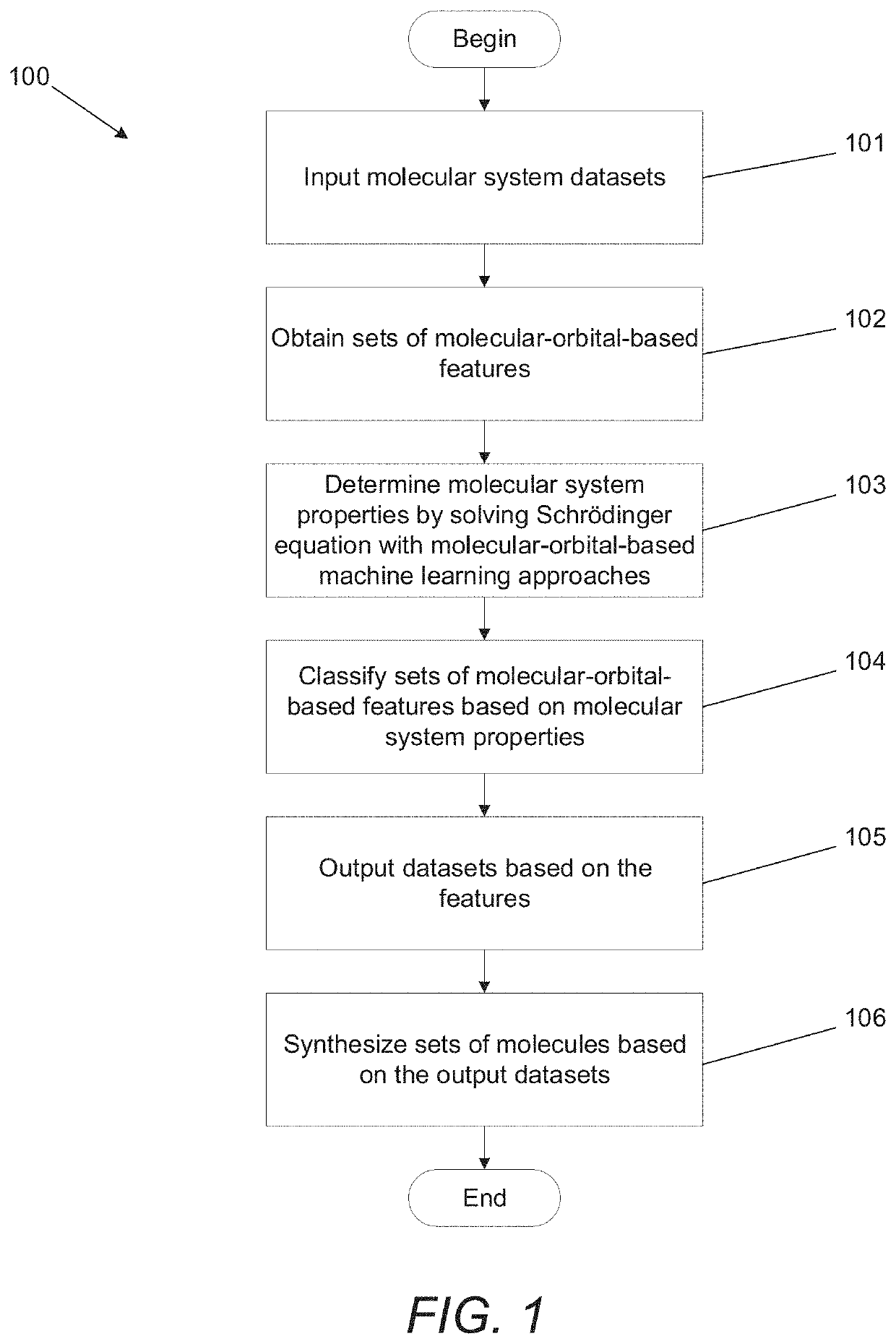Systems and Methods for Determining Molecular Structures with Molecular-Orbital-Based Features
- Summary
- Abstract
- Description
- Claims
- Application Information
AI Technical Summary
Benefits of technology
Problems solved by technology
Method used
Image
Examples
example 1
tion of CCSD and MP2 Correlation Energies of Water Molecule
[0166]Many embodiments implement transferability of MOB-ML process among molecular geometries. Several embodiments include the determination of correlation energies of water molecule geometries based on MOB-ML processes trained on pair energies from randomly sampled water molecule geometries.
[0167]In some embodiments, MOB-ML processes include a single water molecule on a subset of geometries to predict the correlation energy at other geometries. For both the Møller-Plessett perturbation theory (MP2) and coupled-cluster with singles and doubles (CCSD) levels of theory, the diagonal (εd and εdML are used interchangeably) and off-diagonal (εo and εoML are used interchangeably) contributions to the correlation energy can be separately trained using feature set A, as listed in FIG. 11, with 200 training geometries, and the resulting predictions for a superset of 1000 geometries are presented in FIG. 12. FIG. 11 includes employed ...
example 2
tion of CCSD and MP2 Correlation Energies of Water Clusters
[0175]Many embodiments implement MOB-ML process transferability within a molecular family. For example, several embodiments include determination of CCSD and MP2 correlation energies of water clusters based on MOB-ML training on water monomers and dimers.
[0176]In one embodiment, FIG. 16 shows MOB-ML process prediction results of CCSD correlation energies for water clusters: FIG. 16A of tetramer, FIG. 16B of pentamer, FIG. 16C of hexamer, based on training data that include water monomer and dimer. The MOB-ML process can be trained on 200 water monomer and 300 water dimer geometries, and correlation energy predictions can be made for 100 geometries of each of the larger water clusters. MOB-ML prediction errors are plotted versus the true CCSD correlation energy. Parallelity error is removed via a global shift in the predicted energies of the tetramer, pentamer, and hexamer by 1.7, 2.1, and 3.2 mH, respectively. GPR baseline e...
example 3
tion of CCSD and MP2 Correlation Energies of Butane and Isobutane
[0179]Many embodiments implement MOB-ML process transferability within a molecular family of covalently bonded molecules. Several embodiments include determination of CCSD and MP2 correlation energies of butane and isobutane based on MOB-ML training of shorter alkane datasets.
[0180]MOB-ML processes in accordance with many embodiments of the invention can be trained on 100 methane and 300 ethane geometries using feature set B as shown in FIG. 11. In some embodiments, FIGS. 18A, 18B and 19 present the resulting MOB-ML predictions for 100 geometries of butane and isobutane. FIGS. 18A and 18B show CCSD correlation energies for butane and isobutane, with MOB-ML processes obtained from training on methane and ethane in FIG. 18A, and methane, ethane and propane in FIG. 18B. Prediction errors are plotted versus the true CCSD correlation energy. Parallelity error is removed via a global shift in the predicted energies of butane...
PUM
 Login to View More
Login to View More Abstract
Description
Claims
Application Information
 Login to View More
Login to View More - R&D
- Intellectual Property
- Life Sciences
- Materials
- Tech Scout
- Unparalleled Data Quality
- Higher Quality Content
- 60% Fewer Hallucinations
Browse by: Latest US Patents, China's latest patents, Technical Efficacy Thesaurus, Application Domain, Technology Topic, Popular Technical Reports.
© 2025 PatSnap. All rights reserved.Legal|Privacy policy|Modern Slavery Act Transparency Statement|Sitemap|About US| Contact US: help@patsnap.com



